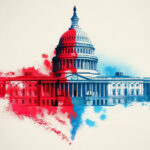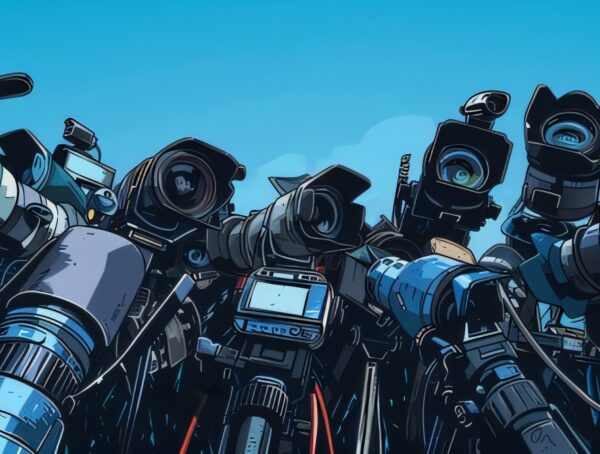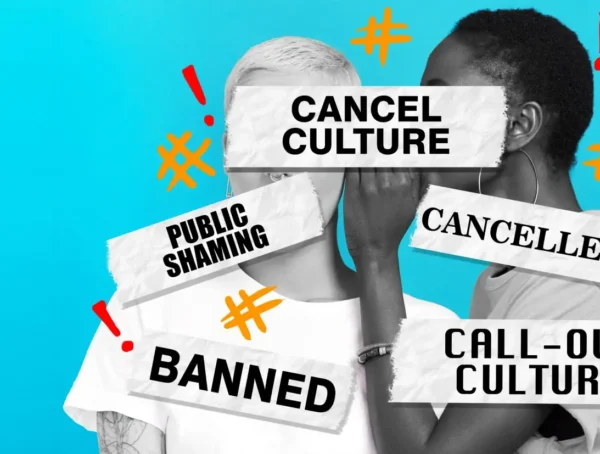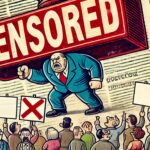TL;DR: The Twitter Files expose a troubling collaboration between government agencies, corporations, and Twitter to control narratives and suppress dissent. Key revelations:
- Government Influence: Agencies like the FBI, DHS, and CISA flagged tweets and accounts for moderation under the guise of combating misinformation. This included silencing domestic voices on election integrity and COVID-19.
- Corporate Collusion: Pfizer and other corporations influenced content moderation to stifle criticism, especially during the COVID-19 pandemic.
- Political Pressure: Both the Biden and Trump administrations sought to influence moderation, with the Biden administration achieving significant censorship of dissenting voices.
- Public Health Control: The CDC and NIH suppressed legitimate debates about vaccines, masks, and COVID origins, prioritizing conformity over transparency.
- Media and Algorithms: Twitter shadow-banned users, limited visibility, and shaped narratives without transparency, undermining trust and open discourse.
- The Hunter Biden Laptop Story: Suppressed before the 2020 election due to FBI priming, demonstrating coordinated narrative control.
- COVID-19 Dissent: Accurate but inconvenient content was flagged as misinformation, silencing credible voices and creating a one-sided public health narrative.
The revelations raise concerns about the role of platforms as neutral spaces for public discourse and the increasing influence of external entities in shaping what information is visible. They call for greater accountability, transparency, and protection of free speech in the digital age.
In a world increasingly governed by opaque institutions, the issue of censorship and control of information has come to the forefront, especially as more of our societal discourse moves onto platforms like Twitter.
The “Twitter Files” peeled back the curtain on how government influence has seeped into platforms like Twitter, exposing a troubling system where free speech collided with institutional control. Released after Elon Musk’s acquisition, these files revealed the intricate network of government agencies, private corporations, and political figures shaping content moderation to align with specific political goals.
This wasn’t about rogue actors or authoritarian regimes—it was a sophisticated collaboration. Agencies like the FBI and DHS leveraged their influence to nudge Twitter into censoring content under the guise of combating misinformation. The FBI flagged tweets and accounts, not just from foreign actors but from American citizens and journalists, bypassing formal legal processes. Meanwhile, DHS’s Cybersecurity and Infrastructure Security Agency (CISA) worked with Twitter to monitor and suppress narratives on election integrity and COVID-19, further blurring the line between public oversight and governmental overreach.
The files expose more than policy failures—they reveal a systemic effort to control narratives, raising urgent questions about the role of platforms in protecting free discourse in the face of external pressures.
What was Unveiled by the Twitter Files:
Taking a Fast Look at the Original Twitter Files Posts:
Part 1: The Hunter Biden Laptop Story – A Lesson in Policy Overreach
1. Thread: THE TWITTER FILES
— Matt Taibbi (@mtaibbi) December 2, 2022
- Revelation: Jim Baker, Twitter’s Deputy General Counsel and ex-FBI official, secretly vetted the Twitter Files before release, causing delays.
- Background: Baker had ties to controversial FBI cases (Steele Dossier, Alfa-Bank) and joined Twitter after leaving the FBI amid a leak investigation.
- Discovery: Journalists found files marked “Spectra Baker Emails,” showing Baker’s involvement in reviewing the documents.
- Action: Elon Musk fired Baker to ensure transparency and prevent further delays.
- Implications: Raised questions about institutional bias, transparency, and the influence of government-linked individuals in private companies.
- Broader Issue: Highlighted the difficulty of dismantling entrenched systems of influence to expose the truth.
The Hunter Biden laptop story wasn’t just a controversial decision by one platform—it exposed how government influence, social media policies, and misinformation narratives worked together to shape public discourse. The Twitter Files revealed this suppression wasn’t isolated but part of a coordinated effort involving Twitter, Facebook, the FBI, and political leaders. As various parties collaborated behind the scenes, it became evident that the narrative surrounding Hunter Biden was manipulated to align with a specific political agenda. This orchestrated effort highlighted the intricate web between biden and the censorship industrial complex, raising urgent questions about free speech and the power dynamics at play in the digital age. Ultimately, the incident served as a wake-up call, urging society to critically examine the intersection of technology, governance, and information flow.
When the New York Post broke the story in October 2020, Twitter blocked it under its “hacked materials” policy. Yet internal emails showed cracks in this justification. Twitter’s VP of Global Communications, Brandon Borrman, questioned whether the policy applied since there was no evidence the materials were hacked. Still, the story was suppressed—driven by a narrative already established by a letter from over 50 former intelligence officials claiming the laptop bore “classic earmarks” of a Russian disinformation operation.
Facebook also took action, with Mark Zuckerberg later admitting the FBI had warned them about potential “Russian disinformation” before the election. Though the Hunter Biden story wasn’t mentioned specifically, the warning was enough to throttle its reach.
This coordination showed how platforms, under government pressure, moved from moderators of content to gatekeepers of public discourse, aligning decisions with political narratives and shaping what millions of Americans could see and discuss.
Part 1.5: Jim Baker – The Black Box of Oversight
THREAD: Twitter Files Supplemental
— Matt Taibbi (@mtaibbi) December 6, 2022
- Shocking Twist: Jim Baker, Twitter’s Deputy General Counsel and former FBI General Counsel, was secretly vetting the Twitter Files before their release, without the approval of new leadership.
- Delays Explained: Baker’s involvement caused delays in releasing further installments, raising concerns about transparency and bias.
- Baker’s Background: Played key roles in controversial FBI cases (Steele Dossier, Alfa-Bank) and joined Twitter in 2018 after resigning amid a press leaks probe.
- Discovery: Journalists Matt Taibbi and Bari Weiss found files marked “Spectra Baker Emails,” showing Baker’s role in reviewing the files.
- Elon Musk’s Action: Upon learning of Baker’s interference, Musk fired him to ensure full transparency.
- Broader Challenge: The incident highlighted the difficulty of maintaining independence and transparency when government-connected individuals hold influential roles in private companies.
- Thread Focus: Not just about the files themselves, but the internal resistance to their release, emphasizing the need to dismantle entrenched systems of influence to expose the truth.
The next Twitter Files thread revealed a stunning revelation: Jim Baker, Twitter’s Deputy General Counsel and former FBI General Counsel, had been quietly vetting the files before release—without approval from Elon Musk or Twitter’s new leadership. This explained delays in the rollout and raised serious concerns about transparency and institutional bias.
Baker’s background made this even more troubling. As a key figure in controversial FBI operations like the Steele Dossier and Alfa-Bank investigations, he brought a history of government entanglements to Twitter. When journalists uncovered that files marked “Spectra Baker Emails” had passed through his hands, Musk acted swiftly, firing Baker to remove a potential barrier to full disclosure.
This wasn’t just about the files themselves but about the forces trying to control their release. It exposed the risks of embedding individuals with deep government ties in private companies and raised critical questions about whether true independence is possible when those connections remain. Transparency, as this thread showed, requires more than unveiling facts—it demands dismantling systems of entrenched influence.
Part 2: Shadow Banning – Algorithms and Hidden Filters
THREAD: THE TWITTER FILES PART TWO.
TWITTER’S SECRET BLACKLISTS.
— Bari Weiss (@bariweiss) December 9, 2022
- Revelation: Bari Weiss exposed Twitter’s use of “visibility filtering” (shadow banning), where accounts weren’t outright blocked but had their visibility secretly reduced.
- Examples: Dan Bongino was on a “Search Blacklist,” Dr. Jay Bhattacharya couldn’t trend, and Charlie Kirk was flagged as “Do Not Amplify.”
- Decision-Making Process: These actions were handled by a secretive team (SIP-PES) of top executives, bypassing standard ticketing systems, and included figures like Vijaya Gadde, Yoel Roth, and CEOs Jack Dorsey and Parag Agrawal.
- Key Case: @LibsOfTikTok was repeatedly flagged and placed on a “Trends Blacklist” despite not violating rules, facing six suspensions in 2022. Meanwhile, Twitter failed to act when the account owner was doxxed.
- Internal Strategy: Yoel Roth’s Slack messages revealed Twitter’s deliberate approach to reducing visibility of “harmful” content while keeping it on the platform to appear non-censorious.
- Broader Implications: Thread Three highlighted how Twitter manipulated public discourse by amplifying or silencing voices in secret, raising questions about transparency, bias, and the power of private platforms to influence public debate.
Bari Weiss exposed Twitter’s use of “visibility filtering,” or shadow banning, to control what users could see. This wasn’t outright censorship but a behind-the-scenes manipulation of reach. Dan Bongino was on a “Search Blacklist,” Dr. Jay Bhattacharya couldn’t trend, and Charlie Kirk was marked “Do Not Amplify.”
Thread Three of the Twitter Files revealed that decisions to limit visibility were made by a secretive group called SIP-PES, which included top executives like Vijaya Gadde and Yoel Roth. Even CEOs Jack Dorsey and Parag Agrawal were involved. These actions, like putting @LibsOfTikTok on a “Trends Blacklist,” were often politically motivated. Despite internal memos admitting no rule violations, the account was repeatedly suspended while receiving no protection when doxxed.
Slack messages from Yoel Roth confirmed a deliberate strategy to quietly limit “harmful” content without removing it. This allowed Twitter to shape narratives without appearing to censor outright. These revelations show how Twitter secretly influenced public discourse, raising serious concerns about bias, transparency, and the unchecked power of tech platforms in shaping debate. The implications of these practices are profound, as they highlight the intricate dance between content moderation and the subtle manipulation of online conversations. Critics argue that this approach mirrors the effects of cancel culture in social media dynamics, where voices can be silenced not through overt bans, but through the strategic suppression of certain viewpoints. As tech platforms wield significant influence over what narratives gain traction, the need for greater accountability and transparency in their actions has never been more urgent.
Parts 3, 4 & 5: About Trump’s Suspension
The next three threads of the Twitter Files peel back the layers of decision-making at Twitter, exposing the interplay of internal debates, political pressure, and government influence on the platform’s most controversial actions. These threads take us inside the rooms where some of the most impactful moderation decisions were made—and reveal just how complex, and at times troubling, those processes were.
1. THREAD: The Twitter Files
THE REMOVAL OF DONALD TRUMP
Part One: October 2020-January 6th— Matt Taibbi (@mtaibbi) December 9, 2022
- Twitter closely coordinated with federal agencies (FBI, DHS, DNI), discussing flagged content like mail-in ballot tweets.
- Many flagged tweets didn’t violate policies but were still labeled or limited based on federal input.
- No moderation requests from the Trump campaign or Republicans were found, raising bias concerns.
This thread reveals Twitter’s close coordination with federal agencies like the FBI, DHS, and DNI. Yoel Roth, Head of Trust and Safety, held weekly meetings with these groups, discussing flagged content, including tweets about mail-in ballots. While flagged tweets often didn’t violate policies, Twitter still applied labels or limited their reach, following federal input.
Notably, no moderation requests from the Trump campaign or Republicans appeared in the reviewed logs, raising concerns about bias. This thread highlights how federal influence shaped Twitter’s moderation decisions, blurring the line between collaboration and censorship.
1. TWITTER FILES, PART 4
The Removal of Donald Trump: January 7
As the pressure builds, Twitter executives build the case for a permanent ban
— Michael Shellenberger (@shellenberger) December 10, 2022
- After the Capitol riots, Twitter faced immense pressure from leaders, media, and staff to act.
- Internal debates revealed disagreements over whether Trump’s tweets incited violence or if banning him set a dangerous precedent.
- On January 8, Twitter cited two Trump tweets as “glorifying violence,” leading to his permanent suspension.
Michael Shellenberger’s thread dives into the events leading to Twitter’s unprecedented decision to permanently ban a sitting U.S. president. In the chaotic aftermath of the January 6 Capitol attack, Twitter faced extraordinary pressure from political leaders, media, and its own staff to take action against Donald Trump.
Internal communications show a heated debate among executives. Some, like Yoel Roth (Head of Trust and Safety), argued that Trump’s tweets risked inciting further violence. Others were concerned about setting a dangerous precedent. On January 8, 2021, Twitter cited two of Trump’s tweets as the basis for the suspension, interpreting them as “glorifying violence.” The decision was hailed by some as necessary for public safety, while critics saw it as a chilling moment for free speech.
THREAD: THE TWITTER FILES PART FIVE.
THE REMOVAL OF TRUMP FROM TWITTER.
— Bari Weiss (@bariweiss) December 12, 2022
- Internal Slack messages exposed divisions among employees, with some arguing Trump didn’t violate policies while others felt his rhetoric was a public threat.
- The decision evolved under immense scrutiny, with Jack Dorsey and top executives ultimately approving the ban.
- Emotional comparisons, like equating Trump to Hitler, highlighted how personal biases influenced decisions.
Bari Weiss’s thread focuses on the intense internal debate over Trump’s suspension. Contrary to the public narrative that this was a clear-cut decision, internal Slack messages reveal deep divisions among Twitter employees. Some argued that Trump’s tweets did not explicitly violate the platform’s policies, while others felt his rhetoric posed an existential threat to public order.
What’s striking is how the decision evolved in real time, with top executives, including Jack Dorsey, ultimately green-lighting the ban. The process wasn’t just about policy—it was about navigating immense political pressure and public scrutiny. The thread highlights the ethical and practical challenges of moderating content from influential figures in moments of crisis.
Donald Trump’s removal from Twitter following the January 6th Capitol riots shows how platforms make governance decisions under extreme pressure. Internal Slack messages reveal a process where policies were reinterpreted to fit a specific outcome. One employee compared Trump to historical figures like Hitler—a clear example of how emotional reactions can distort proportionality.
This was a watershed moment: platforms are not neutral. They are actors in the socio-political landscape, making decisions with far-reaching consequences.
Part 6: The FBI’s Role in Moderation – Where Security Meets Speech
1. THREAD: The Twitter Files, Part Six
TWITTER, THE FBI SUBSIDIARY— Matt Taibbi (@mtaibbi) December 16, 2022
- Revelation: The Twitter Files reveal a close partnership between Twitter and federal agencies like the FBI, raising concerns about overreach and blurred boundaries.
- FBI Involvement: The FBI routinely flagged tweets and accounts for “possible violations,” often targeting low-engagement, satirical, or harmless content.
- Twitter’s Response: Twitter sometimes acted on flagged content, suspending accounts or applying labels, even when the content didn’t clearly violate its policies.
- Institutional Connection: Twitter executives held regular meetings with agencies like the FBI, DHS, DOJ, and DNI to discuss flagged content and moderation strategies.
- Classified Information Sharing: Twitter’s legal team acknowledged there were “no impediments” to receiving classified information from government agencies, illustrating the depth of their collaboration.
- Implications: The thread highlights concerns about the role of private platforms in content moderation and their deep ties to government agencies.
Thread after thread, the Twitter Files show us a troubling pattern: a private platform working hand-in-glove with federal agencies like the FBI to moderate content—even when the flagged material was satirical or trivial. This thread reveals how deeply intertwined these relationships were and raises serious questions about the boundaries between collaboration and overreach.
Here’s what we learned: The FBI regularly sent Twitter lists of accounts and tweets they flagged for “possible violations.” Many were low-engagement, satirical, or harmless jokes, like tweets about voting on the wrong day. In some cases, Twitter acted, suspending accounts or applying labels, even when the flagged content didn’t clearly violate their policies.
The connection wasn’t casual—it was institutional. Twitter executives held regular meetings with the FBI, DHS, DOJ, and DNI, where flagged content and broader moderation policies were discussed. In one instance, Twitter’s legal team confirmed there were “no impediments” to sharing classified information with the company—a strikingly close relationship for a private platform.
Part 7: The Hunter Biden Laptop Redux – Priming Platforms
1. TWITTER FILES: PART 7
The FBI & the Hunter Biden Laptop
How the FBI & intelligence community discredited factual information about Hunter Biden’s foreign business dealings both after and *before* The New York Post revealed the contents of his laptop on October 14, 2020
— Michael Shellenberger (@shellenberger) December 19, 2022
- Revelation: The Hunter Biden laptop story was dismissed by Twitter as disinformation, influenced by federal agency conditioning.
- FBI Influence: Weekly FBI meetings led Yoel Roth, Twitter’s Head of Trust and Safety, to anticipate Russian “hack-and-dump” operations, causing immediate suspicion of the story.
- Ex-FBI Presence: Twitter employed so many former FBI staff, including Jim Baker, that they created a dedicated Slack channel.
- Aspen Exercise: Roth attended a September 2020 simulation at the Aspen Institute that modeled a Hunter Biden “hack-and-dump,” influencing platform responses to similar stories.
- Implications: The thread raises concerns about platform independence when primed by government narratives and coordinated exercises.
The Hunter Biden laptop story didn’t land on a neutral platform—it hit a Twitter already primed by federal agencies to view it as disinformation. Weekly FBI meetings conditioned Yoel Roth, Twitter’s Head of Trust and Safety, to expect Russian “hack-and-dump” operations, leading him to dismiss the story as suspicious immediately.
Former FBI General Counsel Jim Baker, now at Twitter, wasn’t alone—there were so many ex-FBI employees at Twitter that they created a private Slack channel. Meanwhile, Roth attended a September 2020 Aspen Institute exercise simulating a “hack-and-dump” involving Hunter Biden, shaping how platforms would handle such stories.
This thread reveals how FBI influence and coordinated exercises shaped Twitter’s perception of the laptop story, raising critical questions about the independence of platforms when primed by government narratives.
Part 8: The Pentagon’s Covert Accounts and Role in U.S. Military Propaganda
1. TWITTER FILES PART 8
*How Twitter Quietly Aided the Pentagon’s Covert Online PsyOp Campaign*
Despite promises to shut down covert state-run propaganda networks, Twitter docs show that the social media giant directly assisted the U.S. military’s influence operations.
— Lee Fang (@lhfang) December 20, 2022
- Revelation: Lee Fang exposed Twitter’s role in facilitating a covert U.S. military propaganda network to promote pro-Western narratives.
- Whitelist Privileges: Starting in 2017, Twitter allowed CENTCOM accounts to bypass scrutiny, using fake bios, AI-generated images, and fabricated claims to target U.S. adversaries like Russia, China, and Iran.
- Internal Awareness: Twitter executives, including Jim Baker, knew of the deception but prioritized obscuring Pentagon involvement over taking immediate action.
- Delayed Action: Many flagged accounts continued operating until 2022, despite violating Twitter’s policies.
- Enforcement Bias: Twitter quickly removed foreign state-backed campaigns but delayed action on U.S.-linked accounts, raising concerns about inconsistent policy enforcement.
- Implications: Highlights a disconnect between Twitter’s public commitment to transparency and its behind-the-scenes complicity in covert operations.
Lee Fang’s thread exposes how Twitter knowingly facilitated a covert U.S. military propaganda network designed to push pro-Western narratives. Starting in 2017, Twitter granted whitelist privileges to CENTCOM accounts, allowing them to bypass scrutiny. These accounts used fake bios, AI-generated images, and fabricated claims to target U.S. adversaries like Russia, China, and Iran.
Despite internal awareness of the deception, Twitter executives, including Jim Baker, discussed strategies to obscure the Pentagon’s involvement rather than taking immediate action. Many accounts continued posting until 2022, years after they were flagged for violating Twitter’s policies.
This delayed response contrasts sharply with Twitter’s quick takedowns of foreign state-backed influence campaigns, raising concerns about bias in enforcement and the platform’s complicity in covert U.S. operations. It highlights the tension between Twitter’s public stance on transparency and its behind-the-scenes actions.
Part 9: The Intelligence Apparatus Expands
1.THREAD: The Twitter Files
TWITTER AND “OTHER GOVERNMENT AGENCIES”— Matt Taibbi (@mtaibbi) December 24, 2022
- Revelation: Twitter, influenced by federal agencies, blurred the lines between moderating foreign influence and surveilling domestic content.
- FBI’s Role: The Foreign Influence Task Force (FITF) flagged content to Twitter, often targeting accounts that were neither foreign nor influential.
- Expanded Oversight: Efforts originally aimed at combating foreign disinformation grew into monitoring low-engagement domestic content.
- Example Incident: The FBI’s New York office requested user data for accounts mentioned in a Daily Beast article, and Twitter, including ex-FBI lawyer Jim Baker, complied without resistance.
- Unusual Requests: Even Baker noted it was “odd” that the FBI was searching for policy violations, yet Twitter continued fulfilling such requests.
- Key Questions: Why was a foreign-focused task force monitoring domestic speech, and why didn’t Twitter challenge these overreaching demands?
- Implications: Highlights how government influence over a private platform can lead to mission creep, undermining free speech and expanding surveillance.
Twitter, under pressure from federal agencies, blurred the line between moderating foreign disinformation and surveilling domestic content. The FBI’s Foreign Influence Task Force (FITF) flagged accounts and posts that were neither foreign nor influential, expanding its scope into low-engagement domestic content.
In one instance, the FBI’s New York office requested account details based on a Daily Beast article. Senior Twitter executives, including ex-FBI lawyer Jim Baker, complied without hesitation, despite Baker himself noting it was “odd” for the FBI to monitor policy violations on Twitter.
This raises a vital question: why was a task force meant to combat foreign threats focusing on domestic speech? The revelations expose how federal agencies used broad mandates to police content, with Twitter’s unquestioning cooperation enabling this overreach. It’s a stark example of how unchecked collaboration between public and private entities can erode free speech.
Part 10: COVID-19 and the Battle for Truth
1. THREAD:
THE TWITTER FILES: HOW TWITTER RIGGED THE COVID DEBATE
– By censoring info that was true but inconvenient to U.S. govt. policy
– By discrediting doctors and other experts who disagreed
– By suppressing ordinary users, including some sharing the CDC’s *own data*— David Zweig (@davidzweig) December 26, 2022
- Revelation: During the COVID-19 pandemic, Twitter suppressed accurate but contrarian content, favoring alignment with dominant public health narratives.
- Flagged Content: A tweet by @KelleyKga citing CDC data was flagged as “misleading” and engagement disabled, despite using official data. The original, inaccurate post it responded to remained untouched.
- Targeting of Dissent: A physician’s tweet citing a peer-reviewed study was also labeled “misleading,” while posts supporting mainstream narratives were left unchallenged.
- Case Study: Dr. Andrew Bostom was permanently suspended after five strikes for “misinformation.” A legal review revealed only one strike was valid, and even that cited legitimate data challenging dominant views on COVID-19 and children.
- Moderation Bias: Content moderation prioritized conformity with public health messaging over factual accuracy, disproportionately targeting dissenting voices.
- Implications: Twitter’s approach undermined open dialogue, silencing valid dissent and limiting critical discussion during a crucial public health crisis.
David Zweig’s revelations highlight a disturbing reality: during the COVID-19 pandemic, Twitter prioritized alignment with public health narratives over factual accuracy. Tweets citing official CDC data, like one from @KelleyKga, were flagged as “misleading,” while posts spreading actual misinformation were left untouched.
This wasn’t a one-off. A physician’s tweet referencing peer-reviewed research was labeled “misleading,” and Dr. Andrew Bostom faced suspension over multiple “misinformation” strikes—only one of which, an internal review revealed, had any merit. Even that strike cited accurate data inconvenient to the prevailing narrative about COVID-19 risks in children.
These examples expose a moderation system built to enforce conformity, not truth. By suppressing valid dissent while ignoring genuine misinformation, Twitter undermined open dialogue on critical public health issues when it was needed most.
View the Remaining Twitter Files:
You can expand the box below to see a summary of Parts 11-16 of the Twitter Files.
The Twitter Files have grown into an expansive, intricate web of revelations—each thread peeling back another layer of how this platform was influenced by external forces and internal decisions. The sheer volume of information is overwhelming, but it’s also critical to understanding how public discourse has been shaped by unseen forces. So rather than diving into every detail, let’s summarize some of the remaining key threads below, focusing on their major themes and implications.
Part 11: How the Intelligence Community Moved Into Twitter’s Backroom
This thread exposes how Twitter allowed intelligence agencies unprecedented access to shape moderation decisions. Federal entities, from the FBI to other intelligence arms, were deeply embedded in the platform’s processes, raising serious questions about the independence of private platforms in the face of government influence.
Part 12: The FBI’s Role as Twitter’s Content Pipeline
Here, we see the FBI’s role as a central hub for government agencies to funnel moderation requests. Described as the “belly button” for filtering information to Twitter, the FBI acted as a bridge between the intelligence community and the platform, amplifying concerns about the concentration of influence.
Part 13: The White House vs. COVID Dissent on Twitter
This thread uncovers direct pressure from the White House on Twitter to suppress dissenting views about COVID-19, even when those views were based on credible scientific data. It reveals the tension between public health messaging and free discourse during a global crisis.
Part 14: The Russiagate Illusion—Twitter’s Role in Spreading Misinformation
Russiagate dominated the media for years, but this thread highlights Twitter’s complicity in spreading misinformation about alleged Russian interference. It reveals how unverified narratives gained traction through a combination of media amplification and platform involvement.
Part 15: Hamilton 68—The Tool That Built a Phantom Threat
Hamilton 68 claimed to track Russian influence, but this thread exposes the tool’s flawed methodology. By misattributing ordinary user activity to foreign influence, it created a false narrative that shaped media reporting for years.
Part 16: A Controlled Experiment on Media Bias
This lighter thread experiments with how narratives are constructed in media coverage. It serves as a meta-commentary on the broader issues exposed in the Twitter Files, demonstrating how easily perceptions can be influenced.
Final Thoughts: The Future of Speech in the Algorithmic Age
So, what do we make of all this? The Twitter Files provide a disturbing look at how power—whether governmental, corporate, or political—coopts platforms of public discourse to control narratives and suppress opposition. Twitter, once seen as a bastion of free speech, turns out to be another arm of institutional gatekeeping, moderating content under various pretexts but often swayed by external pressures.
The implications are profound. As we move forward, it becomes clearer that any significant platform is vulnerable to this type of influence. The real question is whether future platforms, under Musk’s leadership or otherwise, will break away from these ties or continue to operate under the thumb of vested interests. For now, what we can say for certain is this: censorship isn’t always an authoritarian brute force; it is, more often than not, a sleek, bureaucratic machine, finely tuned to silence dissent while keeping its image clean.
In the end, the Twitter Files are not just about Twitter. They’re about us—about how much we are willing to tolerate the suppression of ideas under the guise of moderation and “safety,” and how we can ensure that free speech remains at the core of our democratic ideals in a world increasingly governed by algorithms, influence, and behind-the-scenes power plays.
RESOURCES:
The “Twitter Files” have been the subject of various government resources, including congressional hearings and official reports. Here are some notable .gov resources:
- House Judiciary Committee Hearings
- March 9, 2023: Examined federal involvement in social media censorship through “The Twitter Files.” Hearing on the Weaponization of the Federal Government
- November 30, 2023: Reviewed government censorship and attacks on free expression. Hearing on the Weaponization of the Federal Government
- Congressional Reports
- FTC Harassment of Twitter: Details FTC’s overreach in handling the Twitter Files. Weaponization of the FTC
- Supreme Court Filings
- Amicus Brief: Twitter Files journalists highlight free speech concerns. Supreme Court Docket 23-411
- Biden White House Censorship Report
- Description: Investigates the Biden administration’s influence on social media censorship and its First Amendment implications. Biden White House Censorship Report
More from Politics
Why You Can’t Trust the News Anymore
In today’s media landscape, the illusion of an unbiased, purely journalistic fourth estate is as believable as a late-night infomercial …
Cancel Culture: The Hunger Games of Social Media
From Torches to Tweets: The Lynch Mob Goes Digital Cancel culture is the sacred cow of our enlightened era. Over the …
Why the ‘Racism’ Excuse for Kamala’s Loss Falls Apart
Let’s get one thing straight: Kamala Harris didn’t lose the 2024 election because of racism, misogyny, or some other well-worn …



















